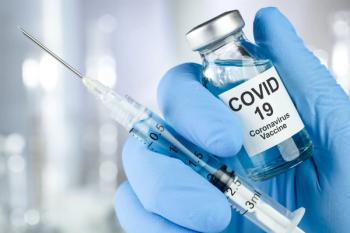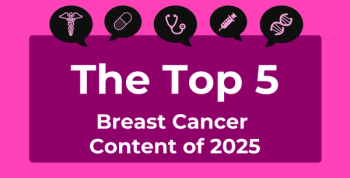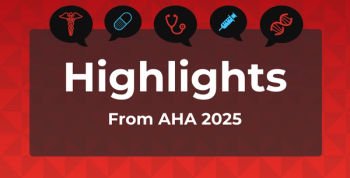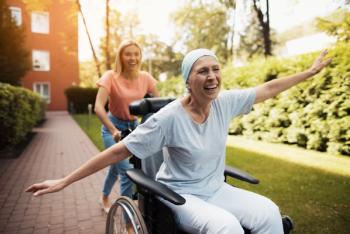
New Data Update Myasthenia Gravis Outcomes for Patients in Australia
Patients living with myasthenia gravis in Australia were surveyed their demographic information, clinical features of the autoimmune disease, adverse effects from treatment, and quality of life. Outcomes were compared against 2011 data from Australia and 2019 data from the United States.
Updated data from Australia on patients living with
New research published in
The mean (SD) patient age was 60.5 (15.5) years, and male patients were 13 years older than female patients (69.4 [11.6] vs 56.0 [15.3] years). Forty-six percent of participants were retired, and 31% were working full or part time. Of those working full time, 61% said their MG necessitated them taking time off work.
Clinical features of MG demonstrated differences stratified by sex:
- Female patients had a longer disease duration vs male patients: 12 (12.3) vs 8.4 (8.5) years (t237.97 = 2.83; P =.005)
- Female patients were younger at disease onset: 41.6 (17.8) vs 59.5 (14.6) years (t207.2 = –8.89; P < .001)
- Female patients were younger at diagnosis: 45 (16.8) vs 61 (13.5) years (t212.1 = –8.48; P < .001)
- Female patients had a longer time between symptom onset and diagnosis: 3.5 (7.2) vs 1.5 (4.5) years (t254.3 = 2.81; P =.005)
For their total disease course, patients reported more total body regions affected than were presently affected. More than half (56%) reported symptoms in 4 or more body regions overall; 32%, 2 or 3 body regions; and 12%, 1 body region. In contrast, 43.2% reported current symptoms in 2 or 3 body regions and 22.2%, 4 or more. The most common symptom area affected overall and currently was eye muscles (67.9% and 92.9%, respectively); 79% of patients reporting 1 body region affected experienced extraocular symptoms. Also, female patients reported more body regions affected vs male patients, at 2.5 (1.3) vs 1.8 (1.3) (t170.9 = 3.90; P < .001), and seronegative patients had more current symptoms areas vs seropositive patients: 3.06 (1.1) vs 2.08 (1.3) (t119.04 = –5.78; P < .001).
The most common diagnostic tests were serology in 65.8% of patients, repetitive nerve stimulation in 47.5%, and single fiber electromyography in 32%. Fifty-six percent of patients reported more than 1 diagnostic test, and 91% knew their antibody status. Of this latter group, 73.1% of those with a disease duration of less than 11 years reported a higher frequency of antibody testing (73.1% vs 52.1%) (χ21 = 12.32; P < .001). Further, 55.9% were positive for acetylcholine receptor antibodies, and more female than male patients reported seronegative status (29% vs 14%) (χ21 = 6.9; P = .009).
For treatment, anticholinesterase was the most popular current treatment (66.3%), followed by immunosuppressants (59.1%), oral corticosteroids (52%), intravenous immunoglobulins (36.2%), and plasma exchange (3.9%). For ever having received treatment, the corresponding rates were 90.7%, 69.2%, 82.8%, 62.4%, and 21.9%. Exacerbations in the year prior to the survey were reported by 32.4% of participants, with 42.2% also reporting 2 to 5 exacerbations, 37% of female patients vs 23% of male patients saying they had an exacerbation in the previous year, and 44.4% noting their exacerbation required hospitalization.
Quality of life was also investigated. Fatigue was the most common adverse effect noted in 86%, and weight gain, decreased ability to fight infections, gastrointestinal symptoms, and muscle weakness were all reported in more than 57% of patients. Further, on the Treatment Side-Effects Severity Scale, there was a significant difference seen between male and female patients, with the former having a lower mean total score: 65.5 (16.1) vs 77.9 (22.3) (t204.06 = 5.01; P < .001). More female than male patients also reported depression and anxiety on this scale (65% vs 44%) (χ21 = 9.1; P = .003) and had significantly higher scores on the Impact Severity Scale (48.7 [18.2] vs 39.9 [14.6]) (t179.42 = 4.01; P < .001).
Patients also reported several limitations on daily activities: 66% reported extraocular symptoms; 57%, difficulty walking; 57% to 84%, having feelings of frustration, to make plans, limitations in leisure activities and performing work, tasks, and social activities. Again, female patients had higher scores than male patients: 13.7 (8.2) vs 9.85 (8.1) (t172.1 = 3.62; P < .001).
“The survey provides a detailed update on the lived experience of Australian MG patients (symptoms, treatments, treatment adverse effects and impacts, quality of life) in 2022,” the study authors concluded. “It reflects upon the considerable burden of disease that is currently imposed.”
They underscored that their findings identified crucial areas of improvement, chief among them treatment optimization, exacerbation management, and guideline review. Additional research should also be conducted on interactions between gender and antibody status.
Reference
Sansoni J, Menon N, Viali L, White S, Vucic S. Clinical features, treatments, their impact, and quality of life for Myasthenia Gravis patients in Australia. J Clin Neurosci. 2023;118:16-22. doi:10.1016/j.jocn.2023.09.023
Newsletter
Stay ahead of policy, cost, and value—subscribe to AJMC for expert insights at the intersection of clinical care and health economics.









































